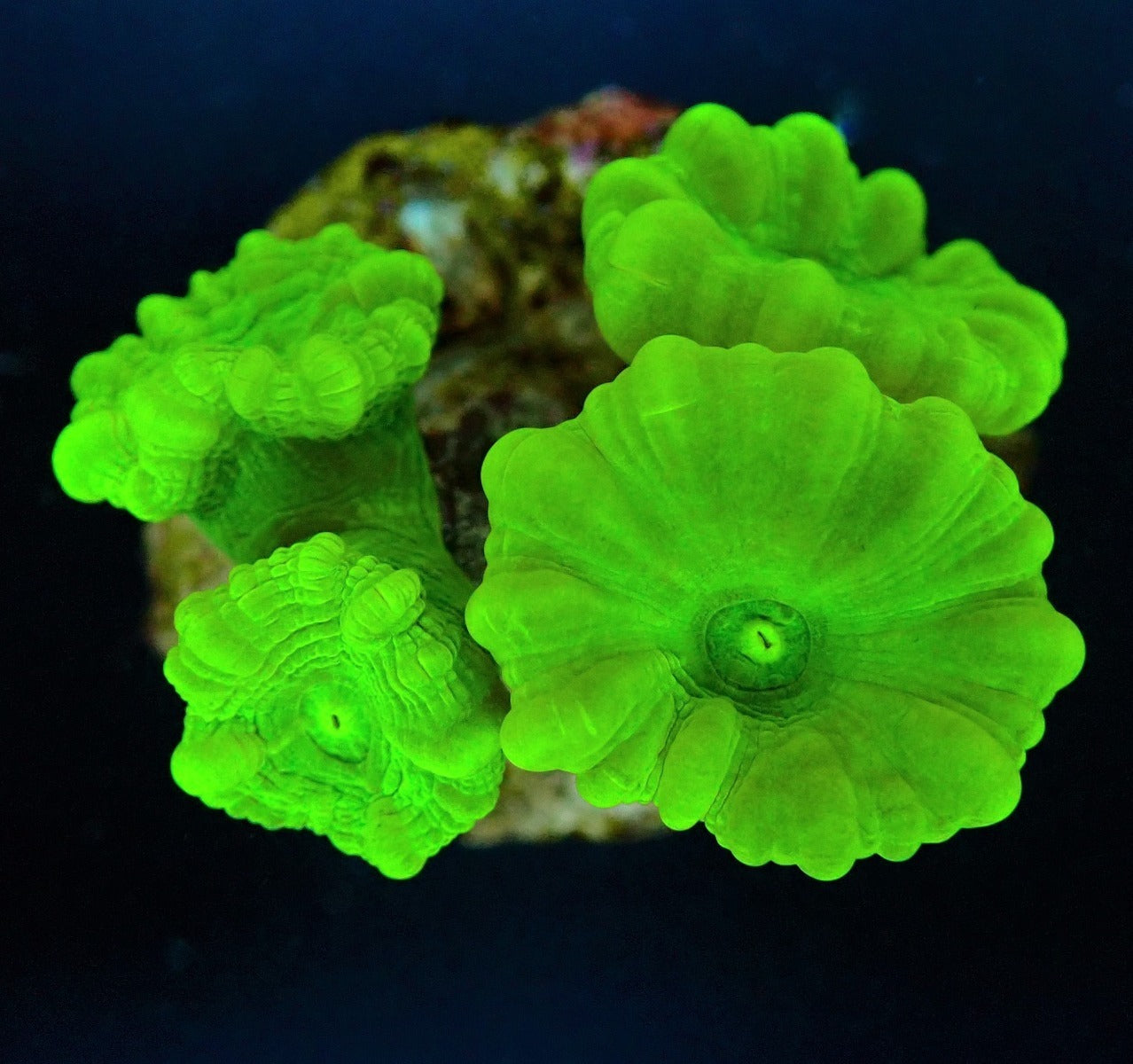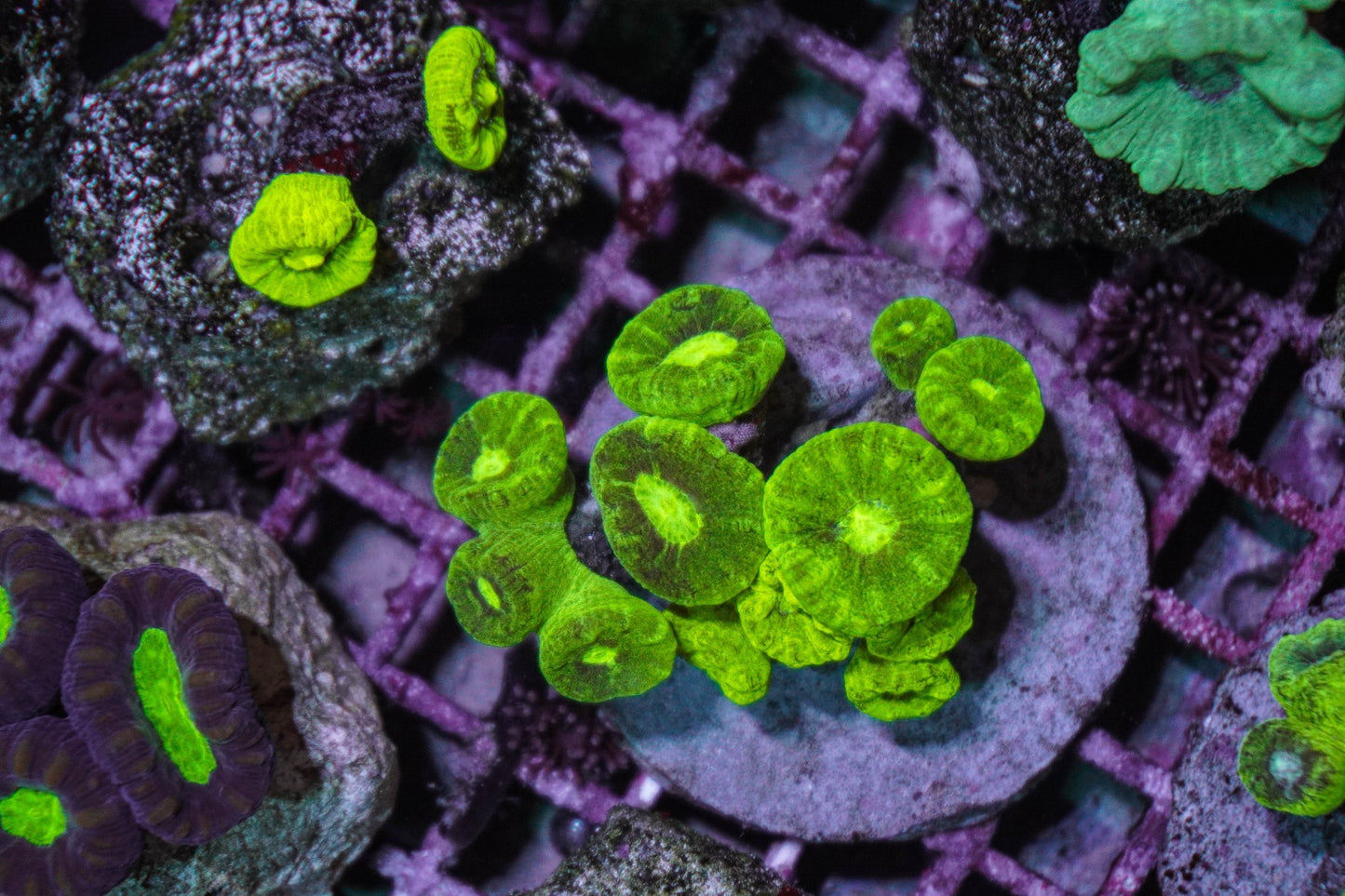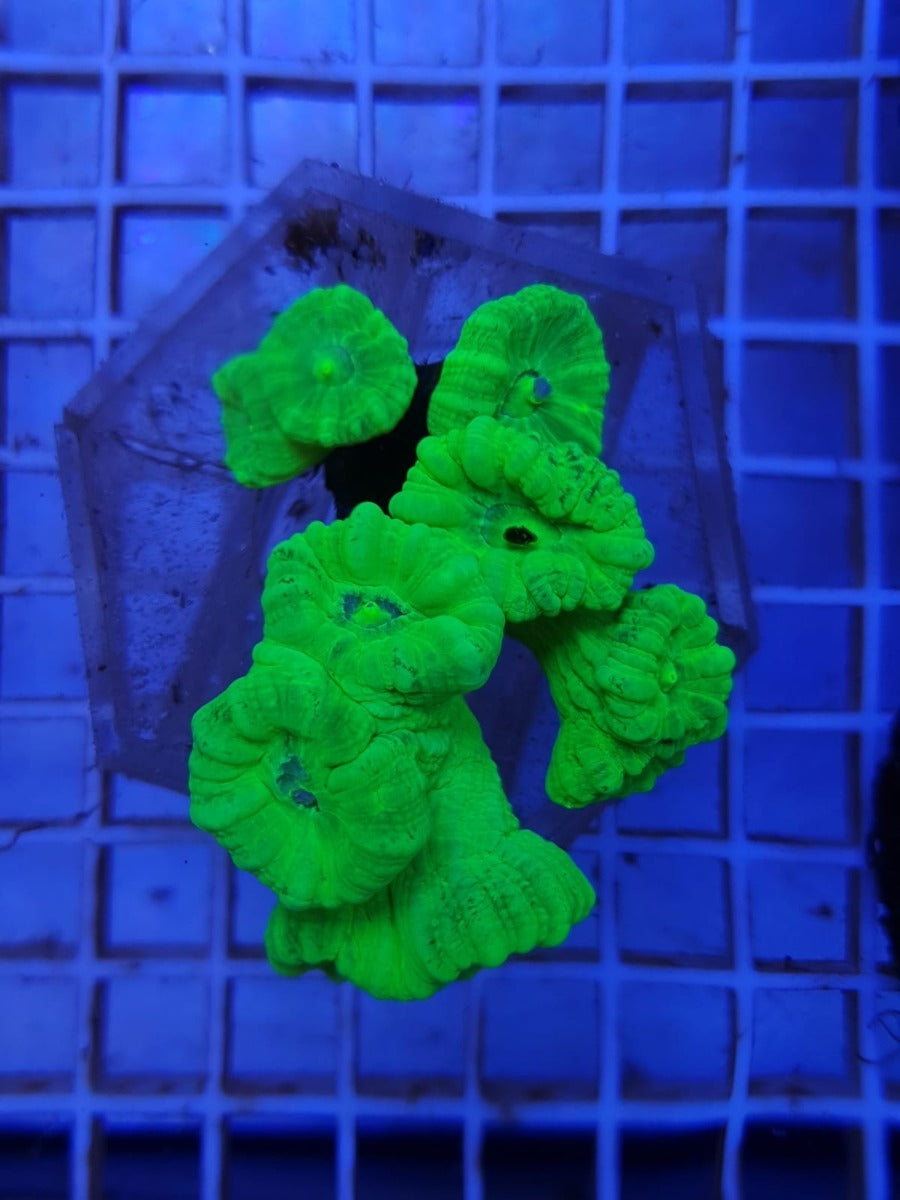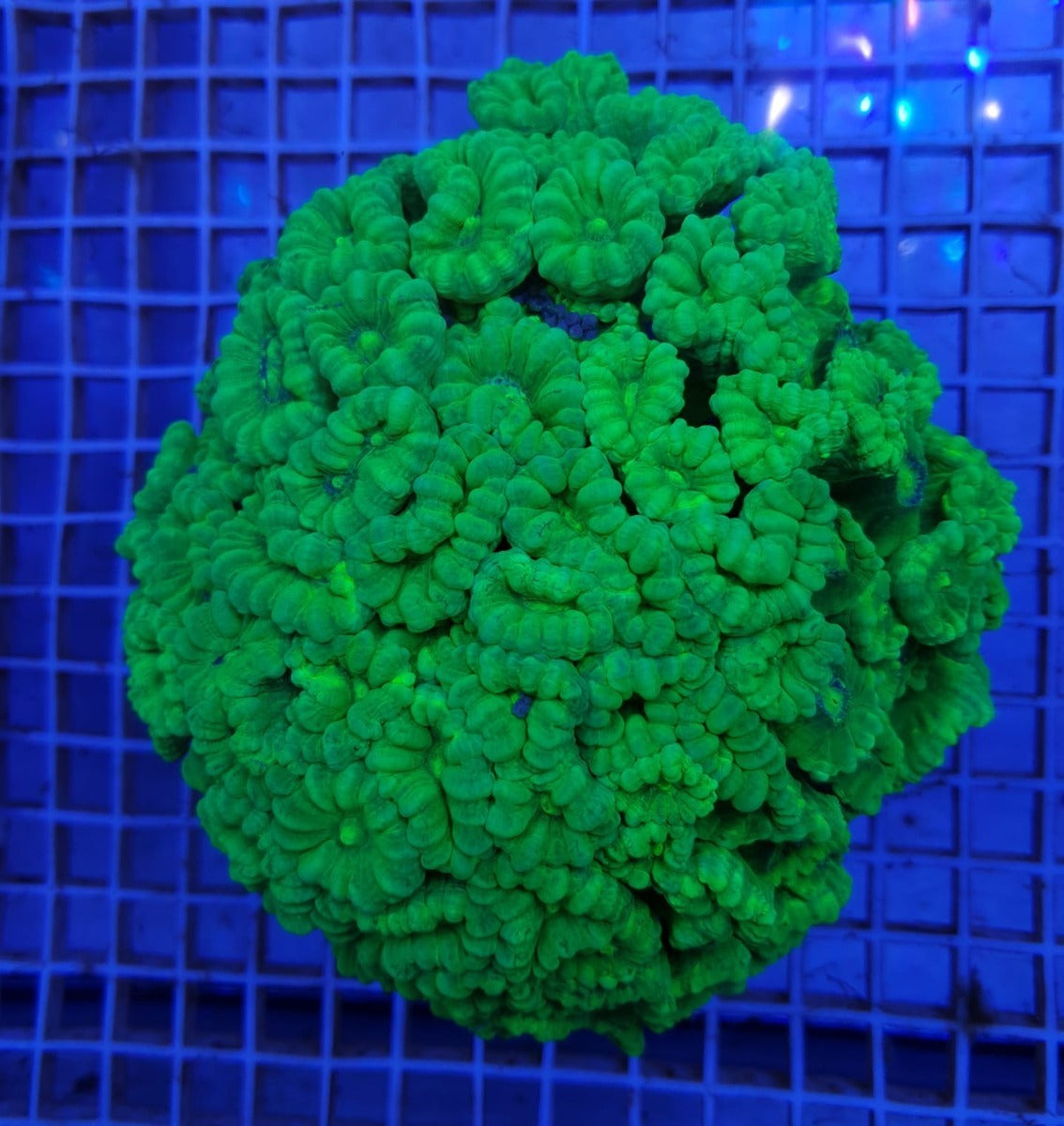Coralreef Store
Caulastrea curvata (Ultra)
Caulastrea curvata (Ultra)
Couldn't load pickup availability
- Indo-Pacific
- Moderate Care Level
- For Intermediate Hobbyists
- Moderate Placement in Reef Tank
Caulastrea curvata (Ultra), commonly known as Candy Cane Coral, is a stunning species of LPS (Large Polyp Stony) coral native to the Indo-Pacific region. This variety, often referred to as the Ultra form, is prized for its vibrant green, pink, and yellow coloration, with the polyps often displaying bright, eye-catching hues. The coral is recognized for its branching structure and fleshy polyps that extend outward, forming a bushy appearance. Caulastrea curvata (Ultra) is a hardy species but requires careful attention to lighting and water flow to ensure it thrives in a reef tank.
Its moderate care requirements make it well-suited for intermediate hobbyists who are comfortable maintaining stable water parameters and offering the right conditions for this beautiful coral to flourish.
Placement in the Tank
Caulastrea curvata (Ultra) prefers moderate to high lighting conditions. It thrives under a light intensity of 150-250 PAR, making it ideal for placement in the middle to upper sections of the reef tank. However, avoid placing it in extremely intense direct light, as this can stress the coral and potentially cause bleaching. This species benefits from moderate water flow, as excessive current can cause its polyps to retract, while stagnant water flow can hinder its ability to capture food and nutrients. A gentle to moderate, undulating flow is perfect for its health and growth.
Water Parameters
Maintaining stable and precise water parameters is essential for the health of Caulastrea curvata (Ultra). The recommended ranges include:
- Temperature: 24°C to 28°C (75°F to 82°F), with 26°C (79°F) being optimal.
- Salinity: 1.023–1.025 specific gravity (SG), with 1.024 being optimal.
- pH: 8.0 to 8.4, with an ideal pH of 8.2.
- Alkalinity (dKH): 8-12 dKH, with 9-10 dKH being ideal for growth.
- Calcium: 400-450 ppm, which is important for skeletal formation and overall coral health.
- Magnesium: 1250-1350 ppm.
- Nitrate: Less than 5 ppm, as high nitrate levels can stress the coral.
- Phosphate: Below 0.03 ppm to prevent unwanted algae growth that competes with the coral for nutrients.
Feeding
Although Caulastrea curvata (Ultra) benefits from its symbiotic relationship with zooxanthellae algae for photosynthesis, it is also a filter feeder and will appreciate supplemental feeding. In aquariums with limited plankton, feeding with finely chopped mysis shrimp, brine shrimp, or zooplankton is recommended. Feed the coral 1-2 times per week, but avoid overfeeding to ensure water quality remains optimal. Its feeding behavior is enhanced by moderate water flow, which helps deliver food to its polyps.
Maintenance and Care
Proper maintenance and care for Caulastrea curvata (Ultra) include regular monitoring of water parameters and maintaining stable conditions:
- Water Changes: Perform regular water changes (10-15% weekly) to help maintain water quality and remove harmful substances.
- Water Parameter Monitoring: Consistently monitor temperature, pH, calcium, and alkalinity to ensure the water is within the ideal ranges for the coral.
- Pruning: Caulastrea curvata (Ultra) does not require frequent pruning, but ensure it has adequate space in the tank to grow without overcrowding other species.
- Pest Control: Watch for pests like Aiptasia, flatworms, and nudibranchs, which can damage the coral. Immediate action is needed if pests are found to prevent long-term harm.
Compatibility
Caulastrea curvata (Ultra) is a relatively peaceful species that does well with other non-aggressive corals. It is best to place it away from aggressive species, such as SPS corals or other LPS corals with long, stinging tentacles, as these can harm the coral. It thrives in tanks with other non-aggressive LPS species, soft corals, and fish that won’t disturb it.
Conclusion
Caulastrea curvata (Ultra) is an incredibly vibrant and visually appealing coral that can add a burst of color to any reef tank. Its moderate care requirements and need for stable water parameters make it well-suited for intermediate hobbyists. With proper care, appropriate lighting, and suitable water flow, this coral will thrive and provide a stunning focal point for your aquarium.
Share








